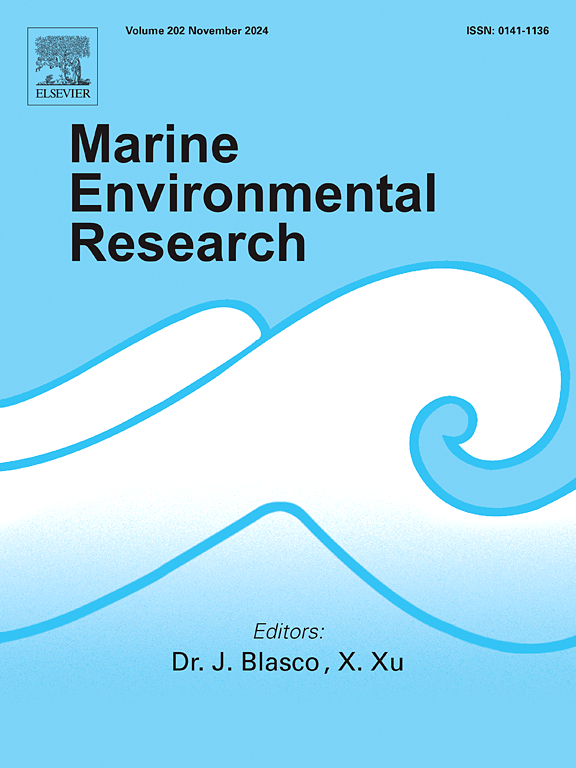CO2 dynamics and sequestration potential in high-nutrient, low-chlorophyll bays: A case study of Yueqing Bay
IF 3
3区 环境科学与生态学
Q2 ENVIRONMENTAL SCIENCES
引用次数: 0
Abstract
Bays, as transitional zones in the land-sea continuum, exhibit fluctuating sea-air CO2 fluxes influenced by climate change and human activities. The role of eutrophic bays as CO2 sinks is debated, highlighting the need to understand CO2 dynamics and controlling factors. This research employs the subtropical semi-enclosed Yueqing Bay as a case to investigate the dynamics of pCO2 and sea-air CO2 flux, as well as the carbon sink potential in high-nutrient, low-chlorophyll (HNLC) bays through high-resolution underway surveys. Although eutrophic bays worldwide typically function as atmospheric CO2 sinks on an annual scale, the high concentration of suspended particulate matter (SPM) from the Oujiang River, combined with sediment resuspension and other processes, inhibits primary production, thereby reducing CO2 sequestration. As a result, Yueqing Bay acts as a net atmospheric CO2 source in August and November, with fluxes of 6.22 ± 8.79 mmol m−2 d−1 and 0.53 ± 0.19 mmol m−2 d−1, respectively, and an average flux of 1.23 ± 1.04 mol m−2 yr−1. However, acting as nutrient reservoirs, the underutilized nutrients in Yueqing Bay partially contribute to algal blooms, which in turn enhance CO2 absorption at the Bay Mouth through seawater exchange. Therefore, HNLC bays like Yueqing Bay demonstrate spatial redistribution of CO2 sink function due to hydrodynamic and biogeochemical processes, offering new insights into the role of bay ecosystems in the carbon cycle.

求助全文
约1分钟内获得全文
求助全文
来源期刊

Marine environmental research
环境科学-毒理学
CiteScore
5.90
自引率
3.00%
发文量
217
审稿时长
46 days
期刊介绍:
Marine Environmental Research publishes original research papers on chemical, physical, and biological interactions in the oceans and coastal waters. The journal serves as a forum for new information on biology, chemistry, and toxicology and syntheses that advance understanding of marine environmental processes.
Submission of multidisciplinary studies is encouraged. Studies that utilize experimental approaches to clarify the roles of anthropogenic and natural causes of changes in marine ecosystems are especially welcome, as are those studies that represent new developments of a theoretical or conceptual aspect of marine science. All papers published in this journal are reviewed by qualified peers prior to acceptance and publication. Examples of topics considered to be appropriate for the journal include, but are not limited to, the following:
– The extent, persistence, and consequences of change and the recovery from such change in natural marine systems
– The biochemical, physiological, and ecological consequences of contaminants to marine organisms and ecosystems
– The biogeochemistry of naturally occurring and anthropogenic substances
– Models that describe and predict the above processes
– Monitoring studies, to the extent that their results provide new information on functional processes
– Methodological papers describing improved quantitative techniques for the marine sciences.
 求助内容:
求助内容: 应助结果提醒方式:
应助结果提醒方式:


